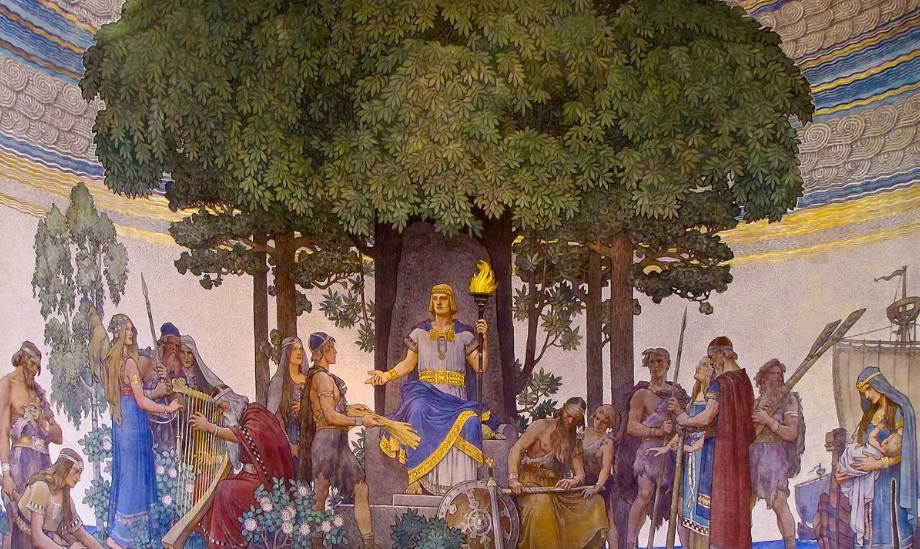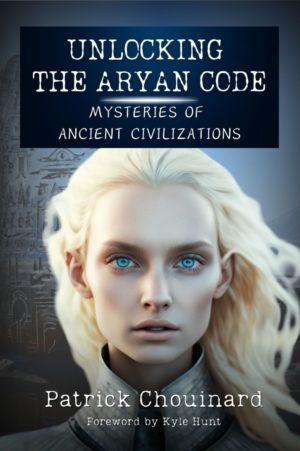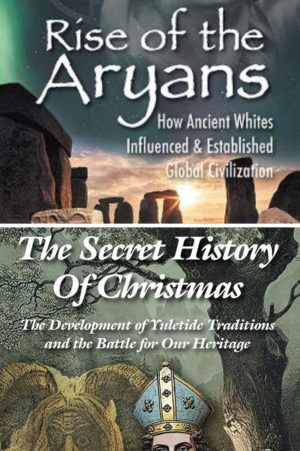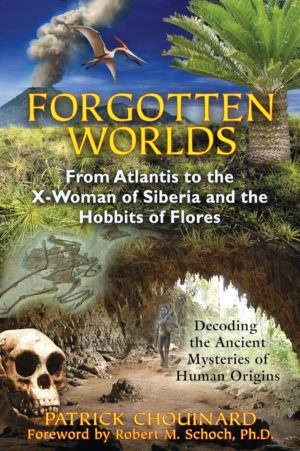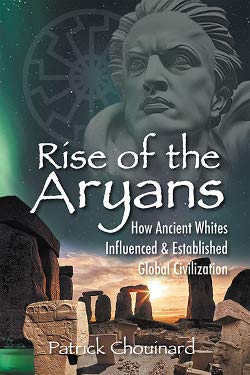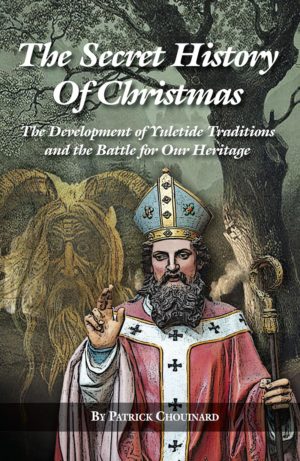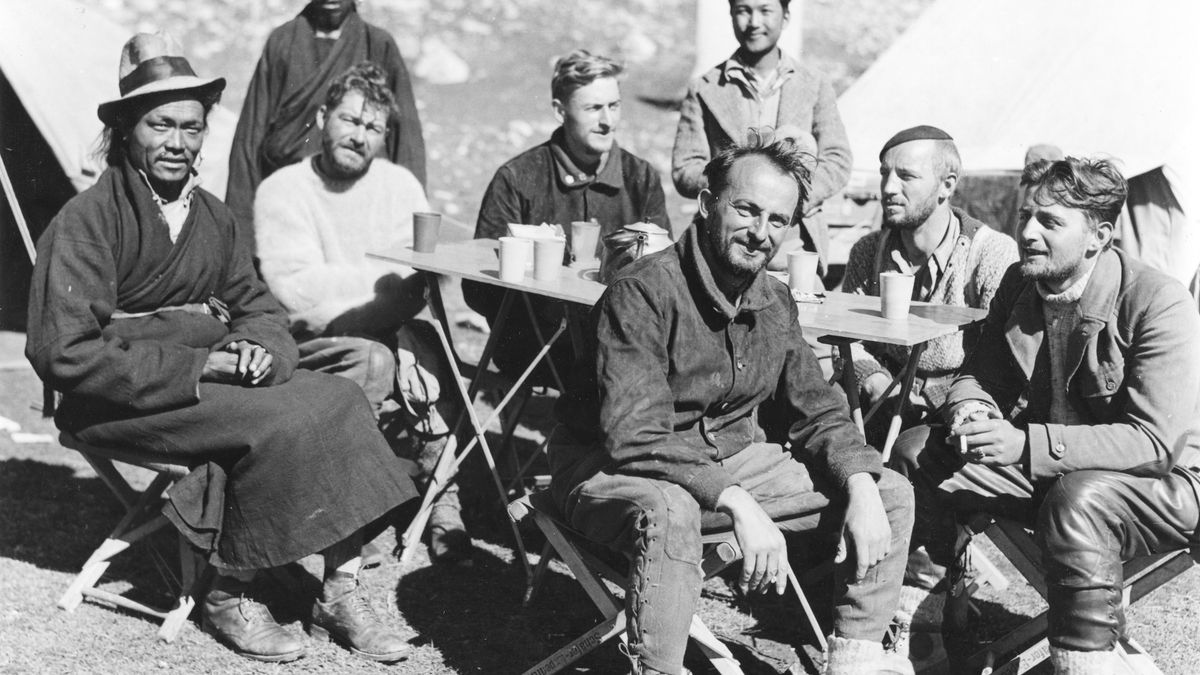[Conan’s Father is speaking] Fire and wind come from the sky, from the gods of the sky. But Crom is your god. Crom, and he lives in the Earth. Once giants ruled the Earth, Conan. And in the darkness of chaos they fooled Crom and took from him the enigma of steel. Crom was angered, and fire shot down from the sky and destroyed the giants. But in their rage, the gods forgot the enigma of steel and left it on the battlefield. And we who found it were just men. Not gods, not giants, just men. Steel has always carried with it a mystery, and it’s up to you to learn its riddle, Conan. For no one—no one in this world can you trust. Not men, not women, not beasts. This you can trust! [Conan’s Father Points to the Sword]
–Conan’s Father, Conan the Barbarian, Film, 1982
LOST CIVILIZATION OF THE GIANTS IN THE CATTACOMBS OF GERMANY
Fellow author and Giantologist Xaviant Haze writes in his recent work of non-fiction, Ancient Giants: History, Myth and Scientific Evidence From Around the World (2018): “Giants are a common theme in the folklores and histories of the German nation. The mystical realms of the Bavarian forests have spawned numerous tales of larger-than-life characters. In the beer-guzzling town of Munich, workers unearthed forty well-preserved skeletons in a sand puit. The skeletons each averaged around seven feet in height and were accompanied with primitive stone tools. This discovery in 1934 was soon forgotten as no other updates surfaced concerning the skeletons. . . A Bavarian catacomb of giant bones arranged in a ritualistic method and buried under hundreds of normal sized bones that had been set on fire some point in the distant past had surfaced generations before. Known as the Breitenwinner Cave, news of the giant bones discovered there was first reported by Berthold Buchner, the explorer who found them in 1535.” (Haze, 2018, Kindle Edition)
Buchner believed that beyond these ancient catacombs, deep beneath the city of Munich, there thrived an ancient city of living giants stemming from a very remote period in antiquity. The citizens of the German city of Amberg had gathered a veritable army of volunteers who attempted to locate the city. Many of them searched the ancient catacombs for more evidence, and a possible entrance to this lost giant civilization. No doubt many of the stories of giants, and the discovery of such bones, are due to the very real presence of those suffering from a distinct, hormonal disorder known as gigantism, and this disorder has appeared prominently among certain populations, and in certain generations of people, emerging at specific times throughout the world. This no doubt was the case among certain tribes of Native Americans. Andrew Collins and Gregory Little, in their book The Denisovans link an ancient population, known only through the study of a decoded genome taken from a small finger bone discovered in a Siberian cave. Collins and Little have speculated that they are at the root of a Native American legend that described a forgotten race of red-haired giants. Again, much of their conclusions are based on cover-ups, old American Indian legends and the genetic history of the Denisovans, which nevertheless is impressive. However, there is yet no consensus and no visible, hard-core evidence to verify such claims. There are many rumors of Smithsonian cover-ups and huge bones that were found, but without the bones available for experts to study there is nothing more to be said on the issue, outside rife speculation and the wide-spread presence of giants in world mythology. What is said in mythology, and in the historical reality of ancient Aryans who certainly towered high above many of the shorter lesser races, brings us to conclude that clearly there were “Aryan giants” in both recent Medieval history and in remote antiquity. This is visible in the bones of Vikings and ancient Germanic remains, very real, larger than life Aryans who towered over lesser, indigenous people. Such bones have not only been discovered and documented but exist in laboratories and in storehouses across the world, and many have been highly studied including having their DNA examined by experts in the field of ancient genetics. This realistic pursuit of the giant legends as an explanation of the enormous presence of giant myths, to this is author is far more interesting and challenging to scholars than giants coming from UFOs or Smithsonian cover-ups of giants found two centuries ago in Mid-western burial mounds. In that sense there was relevancy to such theories due to the formidable size of our ancient Aryan ancestors. Indeed, even some African tribes tended to tower over the populations of Southern Europe, and the same applies to those individuals of Polynesian and Melanesian descent. However, rumors of a distinct race of gigantic-sized humans, as large as they are described in our ancient myths and legends, is not substantiated by the available evidence. Eyewitness testimony of gigantic bones, even in written form by nineteeth century experts with no photographs, bones or further documentations to corroborate such claims is not evidence. These myths, however, have a greater preponderance throughout our culture than the evidence allows, thus such myths seem to give credence to such rumors.
Nevertheless, various German-Aryan accounts have been linked to the presence of legends in the remote, ancient history of Germany itself, dating back to the Pre-Roman Iron Age, and during the years which the Romans favored ancient Germany as an additional province to their Empire, but was eventually defeated by the Roman-trained German leader known as Hermann, and to the Romans as Arminius. Ancient German religion bore striking similarities to that of other Germanic tribes throughout Europe, Britain and Scandinavia, even to Russia and to the Celts of Central and Western Europe. As centuries past, and Germany became more closely associated with the Aryan race by its own people, it was believed that the Aryans were in fact a giant race of god-men, who lost their high-degree of stature through intermingling with lesser races. Jorg Lanz-Liebenfels (1874-1954) published a paper in 1904 that clearly stated “the white race was once endowed with godlike qualities, including sense organs that gave them, a form of clairvoyance. Lanz describes it thus, equating these early humans with what was later worshiped as gods: “What we laboriously and indirectly see with the scientific eye was seen by the ancients using another kind of sight. Because of this they have an amazing knowledge of pre-history.
The divine electricity transferred it into them! The gods were not only living electrical receiving stations; they were electrical power and broadcasting stations.” (Godwin, 2011, pp.120) Lanz continues:
“Only today, now that almost the whole world has succumbed to ape nature–right up to the Germanic countries which have not been fully spared–the truth begins to dawn on us, that we are lacking the divine humanity in a general flood of ape-men. But it will not be long before a new priestly race will rise up to the land of the electron and the Holy Grail, which will play new songs on new harps, and as before, on the first feast of Pentecost, when the spirit descended in tongues of radiation on the apostles (Acts 2:3) so will the electrical swans of the gods come once more to the great Pentecost of mankind. Great princes, strong warriors, God-inspired priests, singer with eloquent songs, putting the sodomite ape-lings in chains, establish anew the Church of the Holy Spirit, of the Holy Grail, and make the Earth into an island of the Blessed.”
I’m not sure where Lanz was going with all this Christian imagery mixed with pagan references, but his belief that Europe, even over a hundred years ago, was being submerged into apedom was very correct. I agree that in remote antiquity our ancient Aryan ancestors not only possessed supreme, godlike qualities but were also perceived as and worshipped as gods, and held over other peoples, and even, in some cases gave these primitive peoples, the gift of civilization. We most certainly see this with advanced cultures such as the Maya, the Olmec, the Egyptians, Sumerians, East Asians and Pacific Islanders, and the Iranians and South Asians were settled by those very same ancestors only to have adulterated their own pure Nordic blood. I think a lot of the so-called deeds prescribed to ancient aliens in our modern-day pop culture, was actually the deeds of these proto-Aryan giants, our remotely distant ancestors who became both the gods and giants of legend and myth.
Guido von List was another early twentieth-century political and racial thinker, philosopher, and theorist who developed a new model of human history called Ariosophy. This was based primarily on an Aryanization of Madame Blavatsky’s teaching, depicting the Aryan, or fifth root race, as being uniquely Germanic in heritage and appearance. List concluded that Germany, before Roman colonization, was the center of a great Ario-Germanic civilization of untold glory and importance. He firmly denied that the Germans displaced the Celts and believed that Charlemagne was not the first to establish a civilized German presence in the region. He identified Charlemagne as the “slaughterer of the Saxons,” and considered Charlemagne’s conversion of the Northern Germans and his forced consolidation of Christian power to be a historical crime (Goodrick-Clarke 1992, 95). This could be a hundred percent bunk, but when one follows my other writings, that is filled with evidence for a lost civilization, List’s work takes on new dimensions.
List claimed that the ancient Teutons practiced a primordial gnostic religion that dominated prehistoric Germany and served as a medium between humankind’s modern existence and an ultimate initiation into the nature mysteries of old. He dubbed this pagan faith Wotanism. The name was derived from the chief god of the Germanic pantheon, Wotan, King of the Gods and Master of War. For List, this religion revealed itself in the Eddas—ancient sets of verses, sagas, and hymns that vividly recall the Old Norse religion and culture, and the runes, which were the magical script of the Germanic tribes and the Vikings.
According to List, the inhabitants of Iceland are refugees from the persecution of paganism in northern Germany following the defeat of Widukind, the most famous of pagan German martyrs. Widukind was a heroic figure, as significant to German history as King Arthur is to the British, with one exception: Widukind’s existence has been verified. He stands alongside such figures as Hermann and Barbarossa as a shining example of German nobility.
List claimed that his knowledge of prehistoric Germany came to him during strolls on the Hermannskogel, a hill that lies just north of Vienna, and through a dream he had while spending the night in an old hill fort in Geiselberg in western Germany. These ancient sites, according to List, were centers for the Armanenschaft, an elite branch of German priests who carried with them the eternal knowledge of Wotan and the Aryan race. Additional sites in the German holy land include Vienna, the earthen burial mounds at Gross Mugl and Deutsch-Altenburg; and the hill forts of Gotschenberg, Leisserberg, and Oberganserndorf. These were some of List’s first inductees into a long list of holy Teutonic cities and sacred Armanenschaft sites. In addition, the town of Ybbs, Austria, List claimed, was erected upon a shrine to the Teutonic goddess Isa. While these locales were thought to be associated with good spirits, the crypt-like ruins of Aggstein, Austria, were linked with the evil spirit Agir (Goodrick-Clarke 1992, 97).
List saw remnants of the once-universal Wotanist faith wherever he went. Situated in the region of the southern Danube, near the modern-day Austrian city of Melk, a vast Armanist temple stretched over many square kilometers. The towns of Osterburg and Burg Hohenegg, along with “the woodland church,” a small stave-like church such as those of medieval Scandinavia, which once stood in Osterburg, were in his view remnants of the great complex of religious strongholds. He interpreted place names and surnames as uniquely Teutonic and directly related to a Germanic god. Among the Wotan-inspired designations were Wutterwald, Wulzendorft, Wultendorf, and Wilfersdorf. The names dedicated to Frigga, Wotan’s wife (also known as Freya and Holla), were remembered in such titles as Hollenburg, Hallabrunn, Hollarn, Frauendorf, and Frauenburg (Goodrick-Clarke 1992, 98).
KARL MARIA WILIGUT AND THE IRMINIST LEGACY
Karl Maria Wiligut, an early twentieth-century German occultist believed that he was the last descendant of the Asa-Uana-Sippe, a long line of Ario-Germanic sages whose origins can be traced back to the dimmest chapters of antiquity. He claimed to possess the esoteric knowledge of a once glorious Germanic past. Through his visions, he was able to observe the movement and evolution of the ancient Germans over thousands of years. His noble sword, which his ancient clan carried into battle, is still rumored to be located at a stone grave in Steinamanger, and his crown in the imperial palace of Goslar (Goodrick-Clarke 1992, 69–92).
Wiligut was a proponent of Irminism, a religious faith that traces the Germanic tribes to 228,000 BCE, at a time when the world had three suns as well as giants, dragons, dwarves, and other fantastic creatures. Irminists have a savior called Krist, a figure who they believe was co-opted by the Christians, and they claim that the Bible was originally written in Germany. Irminists have long been enemies of the Wotanist religion (Goodrick-Clarke 1992, 91–93.
Wiligut believed his family history began with the coming of the Alder-Wiligoten, who ended a devastating world war, ushered in the “second Boso culture,” and established the world capital Arual-Joruvallas, or Goslar, in 78,000 BCE. Great migrations and conflicts ensued, as continent after continent was subjugated and ruled by the ancient Aryans. In 12,500 BCE, the Germans universally accepted Krist and his Irminist faith as the only religion of the Teutonic race, but this ended when challenged by the Wotanists several hundred years later. In 9600 BCE, the Wotanists crucified the holy Irminist prophet Baldur-Chrestos. After this, he disappeared from the ancient runic texts, but rumors held that he broke loose and vanished into the Asian steppes, while the carnage and bloodshed of the great holy war continued for centuries. The advancing Wotanists eventually obliterated the Irminist center in Goslar, but a new temple was built near Detmold. The Wotanists also demolished this in 460 CE (Goodrick-Clarke 1992, 91–93).
The aristocrats of the antediluvian world, known as the Wiligoten, received their potent powers from the Asen and the Wanen, the gods of air and water. Following the fall of Irminism and Wotanism, this powerful clan assumed supreme authority in the Burgenland, and one of the more highly populated regions of primordial Germany. This region is comparable to southern France today. Wiligut associated many of Germany and Europe’s twentieth-century locations with the great cities of Goslar and Steinamanger—metropolises that exist in ruins underneath Vienna (Goodrick-Clarke 1992, 95).
DAVID EDEN LANE — CROSSING THE RUBICON
The great late twentieth century racial thinker and hero, wrote in “Crossing the Rubicon” a few points I wish to share here. His wisdom continues to illuminate thinkers of ancient Aryanism and the racial question throughout our country and world.
- When the religion from Rome was imposed on Northern and Western Europe, it was done by torture, murder, bribery and deceit. So, Adepts or Priests in the old, Aryan Mystery or Pagan religions simply infiltrated the Church. In particular during the Dark Ages as monks or lesser clergy they kept alive the art of reading and writing as well as science and philosophy. The Church began by killing scientists and philosophers, and burning libraries, thus engendering the Dark Ages of disease, superstition, slavery, inquisitions and misery.
- Bible scholars recognize that throughout the ages the great nature philosophers developed coding devices to both preserve and conceal their wisdom, so it would not be misused by tyrants. Examples of their coding devices include (but are far from limited to) the architecture of the Seven Wonders of the Ancient World, including the Great Pyramid at Giza, gematria, cryptograms and hermetic number pyramids. The KJV is a supreme example of their art of coding.
- The bible is comprised of many writings, from many ages and many authors, which are then divided into conflicting Testaments or philosophies. The Adepts who constructed it were, of course, under the scrutiny of higher ecclesiastic authorities and therefore had to be extremely careful regarding what to write, what to translate and how to do so. So, apologists for the bible’s thousands of direct contradictions should quit wasting their time studying dead languages and attempting to turn the last generation of young White men into monkish, love-thine-enemies, turn-the-other-cheek scholars. Monks are the last thing we need right now. Many bible errors, especially those of a mathematical nature, are deliberate constructions designed to call attention to the coding system, for example, the difference in the number and names of patriarchs in Matthew 1 and Luke 3 with 14 more in Luke
- The great nature philosophers, then, after meticulous study of nature determined that the first, the primal, the absolute and highest law is preservation of one’s own kind.
- [Old Testament] is mythology combined with many ancient stories of both Aryan design and, as in the case of Esther, Jewish design; the point is the philosophy… Jews followed the philosophy of the Old Testament and conquered the world. It teaches taking power, plunder and taking women. Its rewards and punishments are for the whole tribe and within the reality of this world. See Deuteronomy 28. In accord with natural law its moral absolute is preservation of one’s own kind, as demonstrated by all living things. Genesis 19 (especially v. 32) makes it clear that all secondary laws, be they about sex, money, government or anything else, must conform to the first or primal law, the preservation of the seed line. Secondary laws are the invention of men and may change as fits the age or the circumstances, but reproduction and preservation of one’s own kind supersedes all else.
- The New Testament, lock, stock and barrel, is racial suicide. The overt content was invented by degenerate Romans and Jews to emasculate the Aryan race. While the Old Testament has picked up traces of Jewish poison over the ages, its core has many similarities to other ancient, Aryan religions. For example, heroic battle deeds, the seizing of women, the slaying of giants and tricking of enemies are typical of Greco-Roman and Norse religions. But almost nothing of the New Testament philosophy is remotely Aryan. John 18:36, “My kingdom is not of this world” is its major poison. The few verses, transparent frauds used to tie the two testaments together, cannot reconcile diametrically opposing philosophies. The New is saturated with suicidal, anti-nature and anti-sex concepts designed to propagate the insane idea of “original sin,” this, so that priest crafters could have both a carrot and a stick, i.e. heaven and hell (I Corinthians 7, Revelation 14). All Aryan religions were fertility religions because lust, sex and reproduction are nature’s plan for the survival of each race and species
- The coding system of the KJV is undeniable under the mathematical laws of probability. It conceals two basic precepts of the ancient Mystery schools and religions. By meticulous study of nature and its geometry, cycles, spacings, etc., the philosophers postulated a force and intelligence which they called the grand mathematician-geometrician of the universe. The second precept teaches that the words of men can forever be twisted, interpreted and translated, but the relationship of number is constant forever. These are the reasons why the KJV is a number code.
- To demand literal belief in the supernatural and impossible religious myths of antiquity is to remain dismally ignorant of the truths of science and nature. Religious mythologies have a purpose, sometimes good, sometimes bad, but only the credulous and simple-minded take them literally. The credulous will never conquer the cunning minions of ZOG.
- The law, the primal law, the moral absolute, the divine command is the preservation of one’s own kind.
- Each and every aware White Aryan must cross the Rubicon, each must help to make the concept underlying and permeating the 14 Words into a sacred battle cry. It is God’s will and command, no matter what name you use for the Absolute.
THE NORDIC PANTHEON
According to ancient Nordic cosmology, the world of the gods consists of two houses of deities, the Aesir and Vanir. The Aesir were the aristocratic, warlike divinities—the largest and most dominating house of the Nordic pantheon. Among them were Odin, Thor, Balder, Tyr, Bragi, Hodr, Heimdall, Vithar, Vali, Ullr, Ve, and Forseti. The Vanir, on the other hand, were agricultural deities, led by Njord, Freyr, and Freyja. Loki was the Norse trickster deity, not a being of pure evil like the Christian Satan, but definitely a being up to no good, much in the same way the original snake figure in the garden of Eden was content with redressing the balance set forth by God.
Loki also features prominently in dealings with the god Thor in that he was a mediator between Thor and the mountain giants when their leader, Thrym, stole Thor’s hammer and promised only to return it if he was given Frejya’s hand in marriage. Loki dressed Thor as a woman and manipulated events so that Thor decimated the giants and seized back his mighty hammer.
The Vanirs’ endless blood feud with the Aesir, on the other hand, has often been likened to a historical conflict between different religious beliefs: the native agriculturalists (for some, the Megalithenvolker) and their conquerors (the Streitaxtvolker)—the Aryan invaders of Germany, Scandinavia, Eastern Europe, and other western lands (Eliade and Trask 1984, 39). As Mircea Eliade and Willard R. Trask explain in From Gautama Buddha to the Triumph of Christianity:
To be sure, the invasions of the territories inhabited by the Neolithic agricultural populations, the conquest of the autochthonous by militarily superior invaders, followed by a symbiosis between two different types of societies, or even two different ethnic groups, are facts documented by archaeology. Indeed, they constitute a characteristic phenomenon of European proto-history, continued in certain regions, down to the Middle Ages. But, the mythological theme of the war between the Aesir and the Vanir precedes the process of Germanization, for it is an integral part of the Indo-European tradition (Eliade and Trask 1984, 42).
The Aesir and Vanir were involved in skirmishes for millennia. After the conflict ended, the groups became close comrades. Three gods in particular assumed the position of the Norse trinity: Odin, Thor, and Freyr (Guerber 1895, 8).
Odin
The chief deity, Odin, was considered to be the very embodiment of Norse culture. Because of Christian influences, he is often considered the supreme all-father progenitor of all the living gods, but clearly that was not his original role. As the undisputed master of battle and victory, kings, heroes, and Viking warriors prayed to him before entering combat. In the Heimskringla, written in about 1230, Snorri Sturluson wrote an in-depth description of Odin (Sturluson and Hollander 1964, 13): “Odin could make his enemies in battle blind, or deaf, or terror-struck, and their weapons so blunt that they could no more cut than a willow wand; on the other hand, his men rushed forwards without armor, were as mad as dogs or wolves, . . . and were strong as bears or wild bulls, and killed people at a blow, but neither fire nor iron told upon themselves.”
It was said that while a Viking longboat moved through the mist, and the water seemed to vanish beneath them, they shot flaming arrows into the fog, screaming the words: “Odin! Odin!” They cried as each arrow pierced the vapor, as if to rouse him from Asgard to point the way to land. Odin’s primary palace was Glads-heim, and he had another in the mystical grove of Glasir. Before Odin’s throne in the main chamber were twelve majestic thrones of smaller size, each made from the finest of materials, for the gods to sit in council. Each had a footstool of solid gold, the basic metal besides silver from which their abode and all their fantastic artifacts were made (Davidson 1993, 109).
Odin sacrificed his eye to the giant Mimir’s sacred pool to obtain secret knowledge. In this he is reminiscent of the Greek god Prometheus, who also sacrificed part of himself for the dignity and worth of human concerns and society. Odin realized that his newfound knowledge of the future could aid in his battle against the giants, thus helping to protect the men and women of Midgard. To obtain the knowledge of runes, Odin hung for nine days and nights on the World Tree, Yggdrasil, peering into the eternal wintry abyss of Nifelhiem, one of the primordial realms—an image reminiscent of Christ on the cross. After his ordeal, Odin arose with runes chiseled on his spear and on the teeth of Sleipner, his magical eightlegged horse. He granted the knowledge of runes to humankind (Grimm 1882, 355).
From his glorious throne, Hildskialf, Odin ruled over the Earth with solemn reflection. While resting one massive hand on Gungnir—his giant, magical spear—he peered below with his one remaining eye and saw the elves, dwarves, and giants scurry about in filth, treachery, and deceit, while the Germanic heroes fought gallantly to show their worthiness for Valhalla, the resting place of the slain. Some of his wives were said to sit upon the throne, looking downward on the northern nations, yet Odin was a jealous god, and he seldom allowed his wives the pleasure of peering from his sacred vantage point. Upon his precious ring, Draupnir, loyal followers swore the oath of allegiance, and fruitfulness and glory came to all those who had the courage to do this (Davidson 1993, 109).
When he marched with his warriors into battle, Odin wore a splendid eagle helmet. Yet he often wandered the domain of Midgard disguised in a long, gray robe and a huge, broad-brimmed hat that cast a shadow over his eyeless socket to keep his identity unknown. He shouldered two ravens, Hugin (thought) and Munin (memory), and at his feet were his pet wolves Geri and Freki, snarling, snapping, and foaming at the mouth, but loyal to their master to the very end (Davidson 1993, 109).
In battle, Odin galloped astride Sleipner, screaming the immortal battle cry, “Odin has you all!” Blood always followed, turning the ground crimson with the saturated flesh of corpses (Davidson 1993, 111).
Valhalla was Odin’s sacred abode of the dead, the holiest of mead halls. He traveled there to revel and rally the departed spirits in great orgies of food, drink, and sex from the prettiest of maidens. It was said to have 540 doors, large enough for the passage of almost one thousand warriors. Its walls were made from millions of brightly shining spears that reflected off one another, producing an eerie light, and the roof was constructed from thousands of golden shields that shot a shimmering ray into the sky above, high into the outreaches of nine worlds. A gargantuan eagle perched atop the structure, its eerie glance piercing the world below, noticing everything that moved in every region of the Earth (Grimm 1882, 360).
A quasi-historical Odin correlates with many of the myths about the Nordic deity. He was the chieftain of a great race of warriors in Asia Minor called the Aesir. They supposedly left their homeland around 70 BCE to escape Roman aggression. H. A. Guerber explains the mortal Odin’s legacy as follows: “According to other very ancient poems, Odin’s sons, Weldegg, Beldegg, Sigi, Skiold, Saeming and Yngvi, became Kings of East Saxony, West Saxony, Franconia, Denmark, Norway, and Sweden and from them descended the Saxons, Hengist and Horsa, and the royal families of the northern lands” (Guerber 1895, 10).
The new faith that followed became quickly confused and confounded with the personage of the wise ruler, and an almost entirely different religion came into being, one based on his deeds and those of his followers. In Uppsala, the temple of the Teutonic race, great sacrifices and rituals were performed. Nordic art flourished for thousands of years, yet most of the objects were made from wood and were burned to ashes by Christian aggression. So, the images of Odin—the focal point of the glorious days of feasting and rejoicing—were gone forever. Yet Odin lives on, and someday he will rule again (Rydberg 2007, 22).
In the myths of the British Isles, King Uther Pendragon, father of the legendary monarch King Arthur, thrust the sword of power, Excalibur, into a large stone, declaring that only the most noble man (Arthur) could withdraw it from its rocky embrace. A similar story is told of Odin and his sword, one that had been forged by dwarves, whose sole purpose was to vanquish a clan of red dragons that once terrorized Asgard (Guerber 1895, 150). As mentioned previously, Odin frequently disguised himself as a one-eyed wanderer to walk among people to observe and listen. One day he thrust his sword into a tree, declaring that only the greatest warrior could withdraw it, and that the man who could achieve this feat would have the right to possess the shining blade. Sigmund, a noble warrior, was the only man able to yank it free. He then used it to set right crimes committed against him and his family (Guerber 1895, 148).
Before Sigmund passed away, he gave the sword to his son, Sigurd. Sigurd used it to slay the fierce dragon Fafnir, then drank its blood to commune with the mystical power of nature and the cosmos. He subsequently rescued a Valkyrie known as Brynhild and made passionate love to her, living the rest of his life for her.
Thor
Throughout the dark ages—a time when paganism was annihilated by the followers of Christ—Saint Boniface was a key figure. In the eighth century, this dedicated zealot came upon a horrifying scene while w andering through the forests of northern Germany. A group of heathen worshippers were congregated around an oak, symbol of the Teutonic god Thor. They were preparing to sacrifice the son of their king, little Prince Asulf, hoping to ensure the well-being and continuation of their race. With one thundering blow of his bare fist, Boniface knocked down the tree. In its place grew a tiny evergreen, which, according to legend, became the first tannenbaum. This was the beginning of the end for Thor and his many adherents (Andrews 1974, 7–8).
Thor was Odin’s favorite son and heir, and perhaps second only to his father in the hearts of the people. When medieval historian Adam of Bremen visited the temple of Uppsala, he saw that Thor, along with Odin and Freyr, was situated in the center and appeared to hold the most venerated position. Indeed, in many German minds, he remained the quintessential embodiment of the common man, as opposed to the haughty Odin who seemed too distant for many Germans to relate to (Davidson 2007, 24).
Thor was a fighting man, down in the trenches, battling for the fatherland and its people. The ancient Nordic people knew this, therefore, they proclaimed him the mightiest of all. Thor was also the lord of thunder and rain. He was bound by a solemn oath to protect mortals from the filth and treachery of giants. Using his will, he manipulates every aspect of the weather, making him a favorite of sailors and merchants. With his mighty arm, he casts magic and throws lightning. He was married to the giantess Larnsaza, and from the fertile union two sons were born: Magni and Modi. His second wife, Sif, bore him a son named Loride and a daughter named Thrud (Grimm 1882, 398).
Thor’s giant hammer was known as Mjollnir and, like the Arthurian Excalibur, it was capable of penetrating any armor or shattering any sword. It also returned back to its master, whenever and wherever thrown, with magical swiftness. Thor’s power belt increased his strength, and his iron gauntlets allowed him to wield his mighty hammer. Blazing across the grayish cloudscapes of the North Sea, he followed the retreating sun, known as Sol, on a chariot driven by two mountain goats named Tanngrisner and Tanngjost.
On one occasion, Thor challenged Hrungnif of the giants to engage in single combat in order to settle long-held disputes. This was a common occurrence, even in the mortal world, where Viking kings would settle their grievances by dueling instead of committing their sons to die in battle. Hrungnir and Thor met for battle where the land of the Aesir and the giants met. Fearful of Thor’s growing strength and indomitable spirit, the giants built a cyclopean clay warrior called Mokkurkalfi and gave him a mare’s heart to animate him. Thjalfi, Thor’s devoted servant, decided to stage a ruse. He said that he wished to betray Thor and told the giants that Thor’s attack would come from beneath. Thus, they braced for the attack by standing on their shields, but of course, Thor ploughed over them from above. He hurled his hammer, which split Hrungnir’s skull. Bits of shattered bones showered over Thor, with sharp pieces becoming lodged in his own skull. The witch Groa then removed them (Grimm 1882, 429).
There were many different stories regarding Thor and the giants, and they differed essentially from the tales of the Greeks in that unlike the Greek deities the Germanic gods could easily be killed and were far more mortal than their Hellenic counterparts. But essentially, there are no other myths on the planet filled with more somber realism and grotesque imagery than those of the ancient Germans.
Freyr
Freyr is perhaps one of the most pretentious of the Germanic gods. He is the supreme god of fertility and holds a position of prestige in the great Norse trinity. His outward appearance is that of a handsome young man, with a square jaw, blond hair, blue eyes, and a strong, athletic build. However, he is also thousands of years old, as are all the gods who dwell in the sacred places of divinities and half-gods. He provides humans with sunshine, rain, peace, joy, and happiness. He symbolizes and protects the union of marriage and ensures conjugal bliss. He is also the master of horses, controlling horses on Midgard and protecting their honor in battle (Grimm 1882, 460).
Freyr commands a ship called Skidbladnir, the product of skillful dwarven craftsmanship, which can be folded up and placed in a pouch. At its maximum size, it supports all the gods of Asgard and can instantaneously transport them anyplace in the nine worlds, enveloped in a cloudlike aura. This is part of an ancient tradition, going back to Bronze Age Scandinavia and even the ancient Celts (Rydberg 2007, 45).
Freyr was also said to have impregnated mortal women. The peasantry regarded these children as a good omen for a plentiful harvest and as a sign of beneficial relations with the gods. Freyr remains to the end a true Nordic hero (Grimm 1882, 460).
THE NORDIC NARRATIVES
The ancient Germans and the Norse and Celtic brethren were gifted in storytelling. When the tales were finally written down centuries later, there was a rich oral tradition to draw from. One of these tales was told by an individual called the Voluspa. The Voluspa was a seer who, like many clairvoyants in Germanic society, committed her prophecies to a narrative. These narratives were usually carried on by oral tradition, but some eventually appeared on rune stones and in the sagas of latter-day Iceland.
A popular poem was “The Thrymskvida,” which was first copied down in the early fourteenth century by historians living in Iceland. Today, one can find it in many collections and public domain anthologies from the Internet to one’s local library. This was a very original comedy, in which the giant Thyrm abducts the goddess Frejya, only to be confronted by Thor in the guise of a young bride—a bride who devours an ox, seven salmon, and two vessels of mead, belches a repugnant scent, and farts a smelly gust of air at the dinner table.
In yet another story, Sigi, Odin’s son, murdered another man’s slave girl and was cast out, left to wander through the world, unable to love, unwilling to hate. Odin took pity on his son and directed him to Hutland, where he seized the mortal throne. There he married and produced a son named Rerir. When Rerir was away on a brief excursion, Sigi’s brothers-in-law slaughtered Sigi and declared the right to ascend the throne. Rerir returned and killed them, decapitated their bodies, and threw their guts into the air for the vultures to feed upon.
THE NORSE AND ALGONQUIN CREATION MYTHS: A COMPARISON
The creation myths of the Norse, originally from Scandinavia in northwestern Europe and the Algonquin of northeastern North America, share much in common. The Norse were great warriors, traders, and explorers, and from 800 to 1000 CE they erupted on to the world stage in what became known as the Viking Age. These pagan seafarers became the scourge of Christendom and Western Europe. They invaded and settled parts of France, Great Britain, Ireland, the Baltic, Russia, and Asia Minor, and peacefully explored and established settlements as far west as Iceland, Greenland, and America.
Leif Erikson, the son of Eric the Red, founder of the Greenland colony, made his way at least as far west as Newfoundland, but probably farther, five centuries before Columbus. Evidence suggests that during one expedition, Leif and his crew made contact with the ancestors of the Algonquin, intermarried, and thus seeded Native American culture, mythology, and their gene pool with elements from the Nordic race.
The Norse creation myth is told in the medieval Icelandic saga known as the Elder Eddas. According to this pagan Teutonic myth, in the before-time there were no heavens, no Earth, no cool waves, nor soft breezed. All that existed was a dark, bottomless abyss called Ginngungagap. However, there remained at this early stage in cosmic evolution two distinct worlds. The first was known as Nifelheim, a land of eternal ice, cold, and darkness. Twelve sacred rivers, known as the Elvigar, flowed from a fountain welling-up in the center of Nifelheim. These rivers then froze as their ancient course flowed beyond the sanctuary of Nifelheim. The result was the formation of huge glaciers and mountains of ice.
South of the realm of ice and mist was a land of eternal fire and heat, known as Muspelheim, the second world. A warm current of air burst forth from this fiery realm and began to melt the ice. The warm air and ice created clouds of hot steam, which condensed to form the frost giant Ymir, whose name means “seething clay.”
Ymir arose out of his cradle of hoarfrost and rime, and looked over the primordial universe. He took a step forward and sent forth a tremendous thud that reverberated throughout the cosmos. Licking her way out of the ice was another creature, the giant cow Audhumbla. Ymir knelt beside her and drank from her teats, and then the milk coursed through his body, increasing his reproductive powers. From under his armpits, a new race of giants was born.
From the union of Bor, the first manlike creature, and Bestla, a female giant, three gods were born: Odin, Vili and Ve. These three gods then murdered the frost giant Ymir, decapitated him, and used his salty blood to create the oceans, lakes, rivers, and streams; his bones became the mountains, and his flesh the Earth. His brainpan became heaven, from his brains all dark skies were created, and the maggots from his stomach became the dwarves. From his hair, the gods formed any number of trees and plants. Among these first trees was Aske, the ash tree, and Embla, the elm. Odin made the first man from the ash and the first woman from the elm. The similarities between Aske and Adam, and Embla and Eve are obvious and might be attributed to the thirteenth-century Christian writers who recorded these pagan myths almost three centuries after Iceland’s conquest by Christianity.
Lewis Spence (1874–1955), a poet, occult writer, and compiler of Scottish folklore, marked some similarities between the idea of the Norse gods creating human beings from trees and an Algonquin Indian legend that attributes the birth of humans to “tree creation” rather than “animal transformation.” Spence writes the following:
But although Malsum [in the Algonquin myth] was slain he subsequently appears in Algonquin myth as Lox, or Loki, the chief of the wolves, a mischievous and restless spirit. In his account of the Algonquin mythology Charles Godfrey Leland appears to think that the entire [North American] system has been sophisticated by Norse mythology filtering through the Eskimo. Although the probabilities are against such a theory, there are many points in common between the two systems as we shall see later, and among them few more striking that the fact that the Scandinavian and Algonquin evil influences possess one and the same name [Loki]. When Glooskap had completed the world he made man and formed the smaller human beings, such as fairies and dwarfs. He formed man from the trunk of an ash-tree, and the elves from its bark. Like Odin, he trained two birds to bring to him the news of the world . . .” (Bierlein 1994, 45)
The apparent similarities between Norse and Algonquin and other Native American myths are striking. Perhaps, they are due to interbreeding and diffusion. There is much evidence to support the theory that the Vikings explored and settled the North American continent centuries before the arrival of Columbus. Indeed, a Viking settlement in Newfoundland has been confirmed that dates to 1000 CE, nearly five centuries before Columbus made his epic voyage. There is also the possibility that both the Algonquin and the Norse had similar supernatural experiences, and that they both had encountered a more advanced race that both myths were based on. Regardless, these parallels provide for ample discussion and debate and will continue to do so for many years to come.
CONCLUSION
The Germanic world is a bizarre and chilling one. The world from which the ancient Norse emerged was one dominated by a deep primordial darkness, both in terms of lack of sunlight and in terms of a brooding and depressed view of the world. The Vikings faced life and death daily, their life was a constant struggle and contrasted between total darkness and an ever-present midnight sun.
Ice dominated their existence, and as in Iceland fire was also second company. Through this constant shifting from light and darkness, fire and ice, there grew pessimism and the indomitable spirit of the warrior, which knew new only loyalty and honor, strength and power. It is easy say that the kinfolk of the Northern European community, the Celts, Slavs, and Germans, and their latter-day brethren the Norse Vikings, believed that strength and indifference to pain and weakness as a virtue, and that the sick and defenseless did not deserve salvation. This was their essential law of life. It creeps into every aspect of their mythology and culture, and rightfully so. Let it never be forgotten the sacrifices these ancient people made so that strength and Nordic-Aryan ingenuity could in the end prevail.
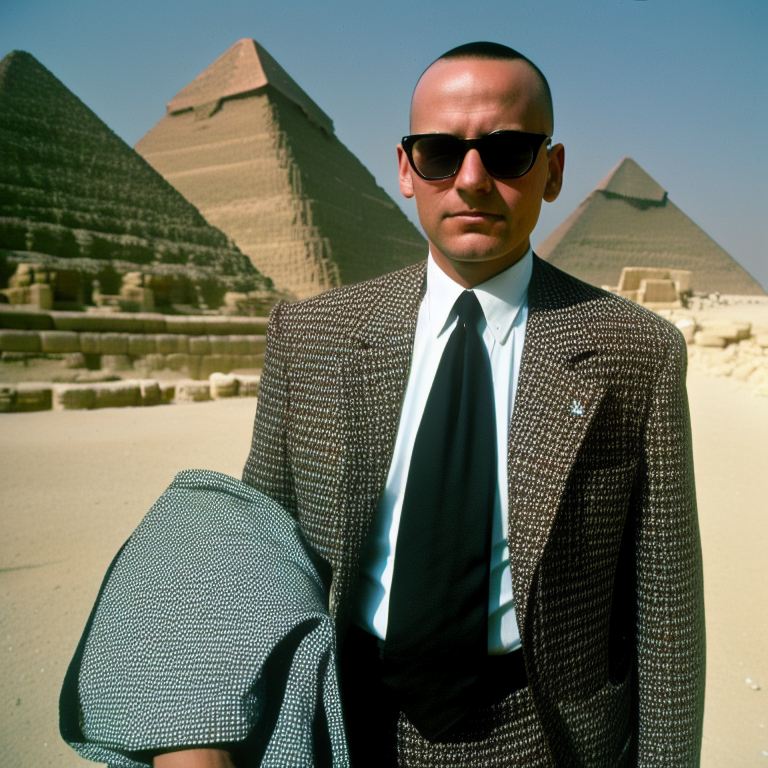
Patrick Chouinard is a distinguished expert on European history and authority on the White race and its roots. He has a BA in Global History and European Studies and currently is seeking an MA in Ancient and Classical History. He has authored six books and is a regular contributor to notable publications such as Ancient American magazine, The Barnes Review, Renegade Tribune, and Nexus. His expertise spans various facets of European history, showcasing a deep understanding and commitment to disseminating historical knowledge.

